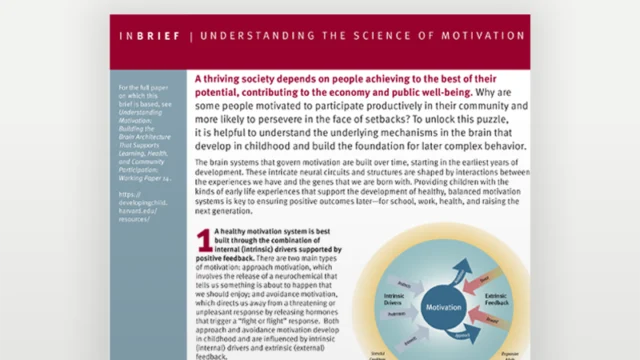InBrief: Understanding the Science of Motivation

A thriving society depends on people achieving to the best of their potential, contributing to the economy and public well-being. Why are some people motivated to participate productively in their community and more likely to persevere in the face of setbacks? To unlock this puzzle, it is helpful to understand the underlying mechanisms in the brain that develop in childhood and build the foundation for later complex behavior.
The brain systems that govern motivation are built over time, starting in the earliest years of development. These intricate neural circuits and structures are shaped by interactions between the experiences we have and the genes that we are born with. Providing children with the kinds of early life experiences that support the development of healthy, balanced motivation systems is key to ensuring positive outcomes later—for school, work, health, and raising the next generation.